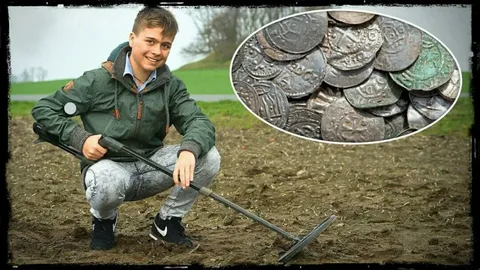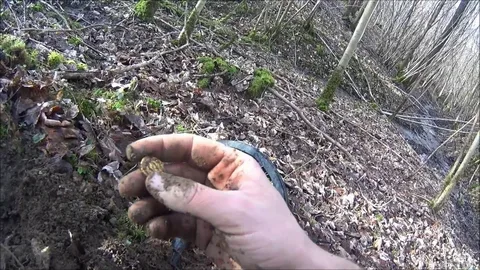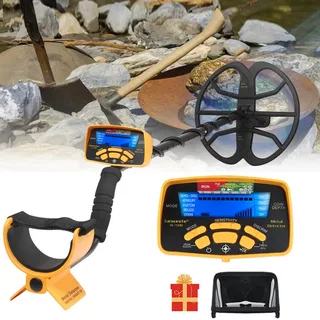Geology and mining are closely intertwined fields that play a crucial role in understanding the Earth's natural resources and how they can be extracted for human use. The relationship between geology and mining is essential for identifying and accessing valuable mineral deposits, as well as understanding the environmental impact of mining activities. In this article, we will explore the intricate connection between geology and mining, and how it influences the way we interact with and utilize the Earth's geological resources.
Exploring the relationship between geology and mining involves studying the geological formations and processes that create the mineral deposits that are extracted through mining. Geologists play a crucial role in identifying potential mining sites and determining the best methods for extracting minerals from the earth. By understanding the geology of an area, miners can predict where valuable resources are likely to be found and how they are distributed within the earth's crust. This knowledge is essential for efficient and sustainable mining practices. Additionally, geology also informs the environmental impact assessments and mitigation measures necessary for responsible mining operations. Overall, the relationship between geology and mining is fundamental to the success and sustainability of the mining industry.
The Impact of Geology on Modern Mining Practices

The impact of geology on modern mining practices is significant and plays a critical role in the efficient extraction of minerals and ores. Geology influences the location, type, and quality of mineral deposits, which in turn determines the appropriate mining methods and techniques. Understanding the geological characteristics of an area helps mining companies to make informed decisions about the feasibility of a project, potential environmental impacts, and the most suitable extraction methods. Geological studies also contribute to the development of sustainable mining practices, as they provide valuable information about the distribution of resources and the potential for future mineral exploration. Overall, geology is fundamental to the success and sustainability of modern mining operations.
Exploring the Role of Geology in Mineral Extraction

Exploring the role of geology in mineral extraction involves studying the Earth's processes and formations to better understand where valuable minerals may be located. Geologists use various tools and techniques to assess the composition and structure of the earth's crust, as well as to identify potential mineral deposits. This information is crucial for companies and organizations seeking to extract minerals, as it allows them to make informed decisions about where to conduct exploratory drilling and mining operations. Additionally, understanding the geology of a region can help in minimizing environmental impact and ensuring sustainable extraction practices. Overall, geology plays a vital role in the efficient and responsible extraction of minerals from the Earth.
Challenges and Opportunities in Contemporary Mining and Geology

Challenges in contemporary mining and geology include environmental impacts, resource depletion, and social responsibility. The industry faces the task of minimizing its carbon footprint and reducing pollution from extraction and processing operations. Additionally, finding and accessing new mineral deposits is becoming increasingly difficult as existing reserves are depleted. However, there are also opportunities in this field. Advanced technologies such as remote sensing, geological modeling, and data analytics have the potential to improve exploration and extraction processes. The growing demand for sustainable and ethical sourcing of minerals presents an opportunity for the industry to embrace responsible mining practices. Overall, the challenges in contemporary mining and geology can be addressed through innovation and a commitment to sustainability.
Uncovering the Science of Geology and Its Relationship to Mining
See also: Uncovering Hidden Riches: The Art of Panning for Gold

Uncovering the Science of Geology and Its Relationship to Mining explores the fundamental principles of geology and how they are applied to the field of mining. This includes geological processes, such as rock formation, erosion, and sedimentation, as well as the identification and extraction of mineral resources. The course also delves into the environmental impacts of mining activities and the importance of sustainable practices in the industry. Students will gain a comprehensive understanding of how geology informs mining practices and the role of geologists in resource exploration and development.
The Intersection of Geology and Mining: A Deep Dive
The intersection of geology and mining involves the study and understanding of geological formations and materials to identify areas with valuable mineral deposits. The discipline of economic geology plays a crucial role in evaluating potential mining sites and estimating the viability and potential yield of a given mineral resource. Geologists use various techniques such as remote sensing, geochemical analysis, and structural mapping to assess the subsurface geology and guide the extraction of minerals through mining operations. Understanding the geological properties of a mining site is essential for maximizing resource recovery, minimizing environmental impact, and ensuring the safety and efficiency of mining activities. Additionally, advances in technology and interdisciplinary approaches continue to shape the field by integrating geological knowledge with engineering, environmental science, and other relevant disciplines.
Evolving Technologies in the Field of Geology and Mining
Evolving technologies in the field of geology and mining include advanced mapping and imaging techniques, such as LiDAR and 3D seismic imaging, which allow for more accurate and detailed exploration of subsurface mineral resources. Additionally, advancements in drilling and extraction methods, such as directional drilling and hydraulic fracturing, have made it possible to access resources in more challenging geological formations. Furthermore, the use of drones and autonomous vehicles has revolutionized the way geological surveys and mine inspections are conducted, improving safety and efficiency. Finally, the integration of data analytics and machine learning has enabled more sophisticated analysis of geological data to identify potential mineral deposits and optimize mining operations.
The Link Between Geology and Sustainable Mining Practices
The link between geology and sustainable mining practices is crucial for the responsible extraction of natural resources. Geology provides the understanding of the earth's composition, including the distribution of minerals and the formation of ore deposits. This knowledge enables mining companies to locate and extract valuable resources in an environmentally and socially responsible manner. By understanding the geological characteristics of an area, mining operations can minimize their environmental impact and reduce the risk of damaging ecosystems. Additionally, geology helps in developing efficient mining techniques, such as identifying the most effective methods for ore extraction and waste management. Furthermore, sustainable mining practices rely on a comprehensive understanding of geology to ensure the preservation of natural habitats, the minimization of water and air pollution, and the prevention of soil erosion. Incorporating geological knowledge into mining operations facilitates the implementation of strategies to rehabilitate land post-mining and mitigate any potential long-term environmental effects. In essence, the connection between geology and sustainable mining practices is essential for the responsible utilization of natural resources and the protection of the environment. It is a critical factor in ensuring that mining activities do not compromise the well-being of current and future generations.
Geology and Mining: An Examination of their Interconnectedness
Geology and mining are closely linked, as the study of geology is crucial for identifying mineral resources and understanding the Earth's composition and structure. Geologists play a key role in resource exploration, helping to locate and assess potential extraction sites. They also contribute to the development of sustainable mining practices by evaluating geological risks, such as seismic activity or ground instability, and helping to plan safe and efficient extraction processes. Additionally, an understanding of geological processes is essential for assessing environmental impacts and designing effective reclamation strategies. In turn, mining activities provide valuable data for geologists, helping to improve our understanding of the Earth's geological history and processes. Overall, the relationship between geology and mining is symbiotic, with each discipline informing and supporting the other.
Innovative Approaches to Geological Exploration and Mining Operations
Innovative approaches to geological exploration and mining operations involve the use of advanced technology, data analytics, and environmental considerations to improve efficiency and minimize environmental impact. This can include the use of drones and satellite imaging for exploration, 3D modeling and virtual reality for mine planning, and autonomous equipment for mining operations. Additionally, new techniques such as in-situ leaching and advanced drilling methods are being developed to access previously inaccessible mineral deposits. These innovative approaches are helping to make mining operations more sustainable and efficient in the long term.
The Future of Mining: Geology's Crucial Role in Resource Extraction
The future of mining relies heavily on geology's crucial role in resource extraction. Geologists play a vital role in identifying and assessing mineral deposits, ensuring the efficient and sustainable extraction of resources. With advancements in technology and data analysis, geologists are able to gather more accurate information about the location and composition of mineral deposits, leading to more targeted and efficient mining operations. Additionally, geologists are also increasingly involved in environmental management and rehabilitation efforts, ensuring that mining activities have minimal impact on surrounding ecosystems. Overall, the future of mining is heavily reliant on the expertise and contribution of geologists in maximizing resource extraction while minimizing environmental impact.
In conclusion, the relationship between geology and mining is undeniable, with geological knowledge playing a crucial role in determining the location, composition, and potential value of mineral deposits. It is through a deep understanding of geology that mining operations can successfully extract and utilize valuable resources from the earth. Therefore, continued exploration and study of the connection between geology and mining is essential for promoting sustainable and responsible mining practices.
See also: Find Your Next Gold Detector Online: Top 5 Choices
